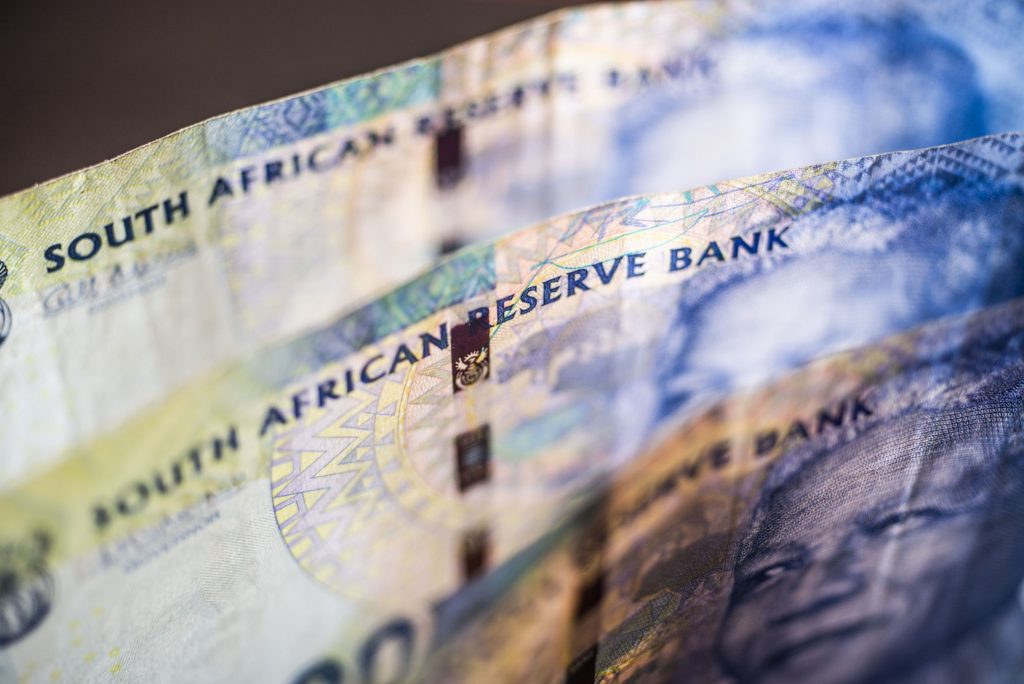You can also listen to this podcast on iono.fm here.
SIMON BROWN: I’m chatting with Kea Nonyana. He’s head of global markets at EA Capital Markets. Kea, I appreciate the time today, as always. On the Friday before last we got greylisted by the FATF [Financial Action Task Force]. It was in the late afternoon. The immediate response was weakness in the Zar (rand). The rand went to about R18.50/dollar. But since then, if nothing, the rand is actually stronger, and the Top 40, our local market, broadly seems to be shrugging it off.
KEA NONYANA: Many investors did believe that the greylisting was already priced in, and I think the immediate reaction was a weakening of about 2% in the local currency against the US dollar.
But Simon, on or about February 16 I had an interview with Fifi Peters, and Fifi asked me why the rand was so weak. I did a bit of research into the foreign portfolio flows on South African bonds at the time. And for 16 consecutive days, between February 1 and February 16, there were net outflows from foreigners of local South African bonds. Further to that, I then started looking at net foreign portfolio flows on the JSE as well. There had been broad-based selling of South African assets all through the time up to the greylisting, and about R18 billion in bonds have been sold since the greylisting, which shows that this is a matter of interest-rate differentials more than it is about the greylisting.
SIMON BROWN: I take your point on that. It’s partly what the Sarb (Reserve Bank) has been doing with their interest-rate increases. They’re saying we are frankly trying to protect the rand, and often the easy story, greylisting, is not directly actually the mover. It’s something else that’s happening in the background.
KEA NONYANA: I think there are some local issues that we need to sort out first. First of all, there is the load shedding as well as the political instability. But I really do believe that at the very core of the problems that we have here in South Africa, it really comes back down to the fact that we are not an attractive destination for capital. And when you do get greylisted, there’s a study done by the IMF [International Monetary Fund] that capital inflows for greylisted countries fall by 7.6% of GDP, and foreign direct investment inflows decrease by 3% of GDP.
We have been fortunate that in the past two years we have had a positive current account, and I think because of weaker commodity prices we are going to have to be funding this current account going into Q2 and Q3. So that does not bode well for the local currency going into the future.
SIMON BROWN: That’s a good point. We’ve never been a massively attractive space but, now that we are greylisted, if you want to build a widget factory or if you want to invest in a particular sector, its the world these days, there is no good reason necessarily to come to South Africa. You can look at a hundred other markets.
KEA NONYANA: You really could. And when you look at South Africa’s currency performance against emerging market peers, it’s the second-worst performing currency. I think it has to do with [the fact] that South Africa remains a place where foreign direct investment can’t find a place because of power, because of energy instability, the high cost of operation, and business red tape. So at the end of the day some of these reasons are partly our own.
SIMON BROWN: Yes. And those are the issues we need to fix, as much as greylisting. But even if you weren’t greylisted, obviously the biggie is the lack of power. Who is going to build a widget factory when there’s no power?
Let me ask you a last question. We chatted maybe six weeks ago about your theme for the year. You said China. It has been under a bit of pressure. Let’s be clear – since those lows of October it is still well off the lows. Data out over the weekend [shows] China sets its economic growth target for 2023 at around 5%. That’s lower than perhaps pre-pandemic levels. But when you’re the second-biggest economy in the world, 5% is a chunky number.
KEA NONYANA: Well, 5% on a large base is still a very good number. I think when you start seeing that earnings growth in the US is coming down, and expected earnings growth in parts of other companies is also coming down, you’d anticipate that you’ll possibly find that the earnings growth is going to come out of China. That bodes well in a world where global economics are starting to affect earnings.
So Chinese companies – because of Chinese consumer demand as well as productive capacity – are going to grow earnings. Capital always finds where earnings are growing.
I still feel that theme will continue.
SIMON BROWN: Should this be good for commodities? In the olden days it was. But of course China has to a fair degree built their infrastructure, but they’re still going to need a lot of commodities. I’m thinking steel, I’m thinking copper and the like.
KEA NONYANA: Correct. Copper, looking at iron-ore counters, you’re looking at some of the mining counters reporting very, very weak earnings in iron ore. So I do anticipate that there will be a recovery in those base metal prices and these metals are the metals that China is going to be using in order to grow their productive capacity. And, as you can see, the PPI numbers are starting to increase, which shows that there is some sort of demand starting to ruffle up in that economy.
SIMON BROWN: That was Kea Nonyana, head of global markets at EA Capital, Kea, I always appreciate the insights.
Listen to the full MoneywebNOW podcast every weekday morning here.

